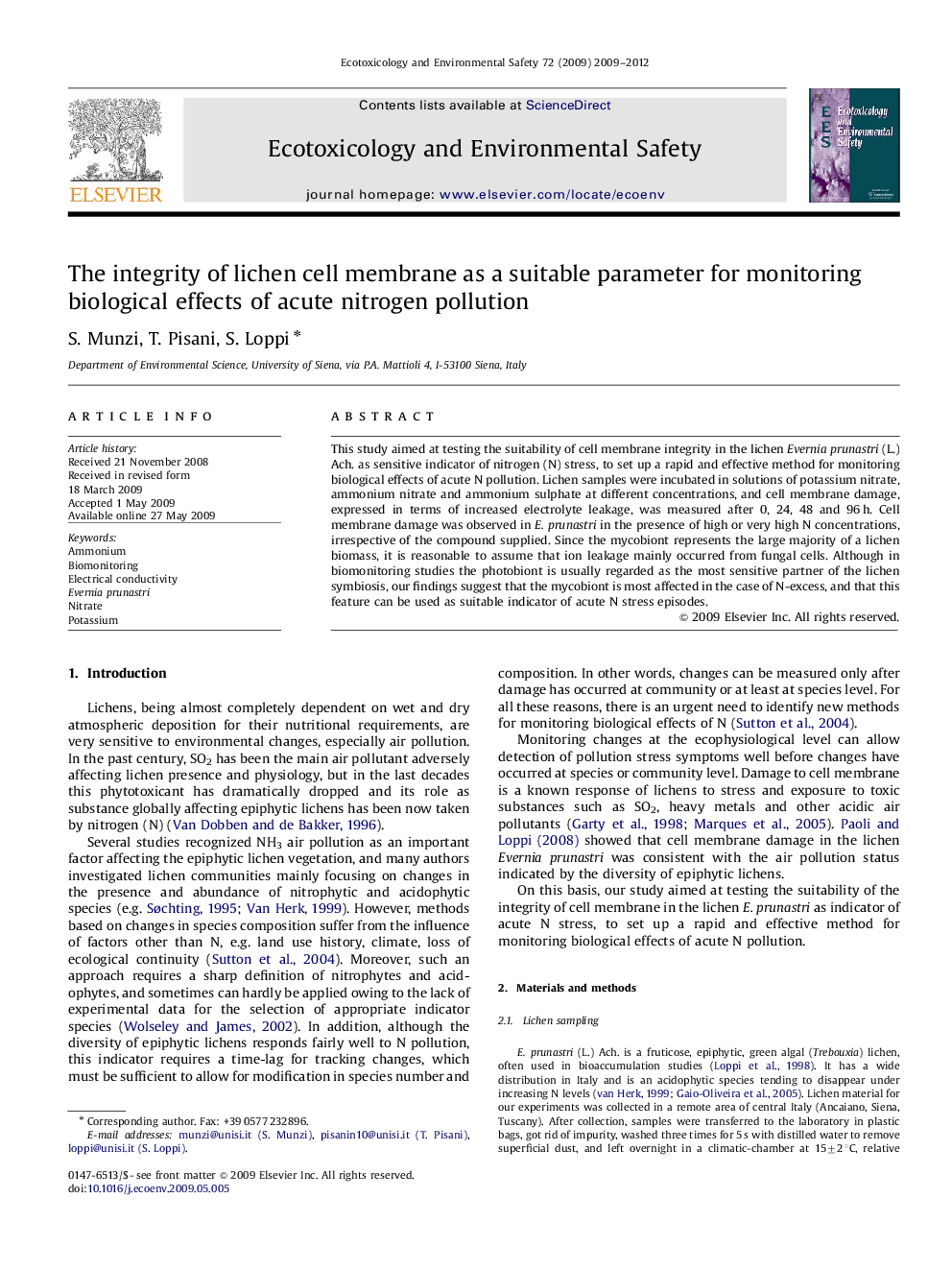| Article ID | Journal | Published Year | Pages | File Type |
|---|---|---|---|---|
| 4421551 | Ecotoxicology and Environmental Safety | 2012 | 4 Pages |
This study aimed at testing the suitability of cell membrane integrity in the lichen Evernia prunastri (L.) Ach. as sensitive indicator of nitrogen (N) stress, to set up a rapid and effective method for monitoring biological effects of acute N pollution. Lichen samples were incubated in solutions of potassium nitrate, ammonium nitrate and ammonium sulphate at different concentrations, and cell membrane damage, expressed in terms of increased electrolyte leakage, was measured after 0, 24, 48 and 96 h. Cell membrane damage was observed in E. prunastri in the presence of high or very high N concentrations, irrespective of the compound supplied. Since the mycobiont represents the large majority of a lichen biomass, it is reasonable to assume that ion leakage mainly occurred from fungal cells. Although in biomonitoring studies the photobiont is usually regarded as the most sensitive partner of the lichen symbiosis, our findings suggest that the mycobiont is most affected in the case of N-excess, and that this feature can be used as suitable indicator of acute N stress episodes.
